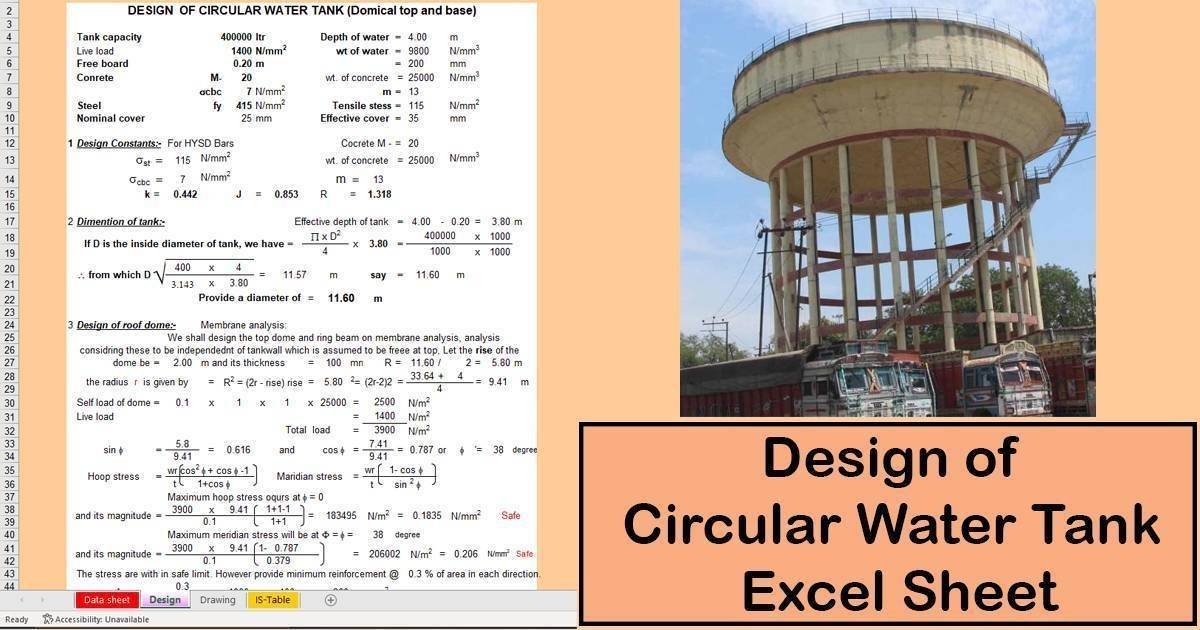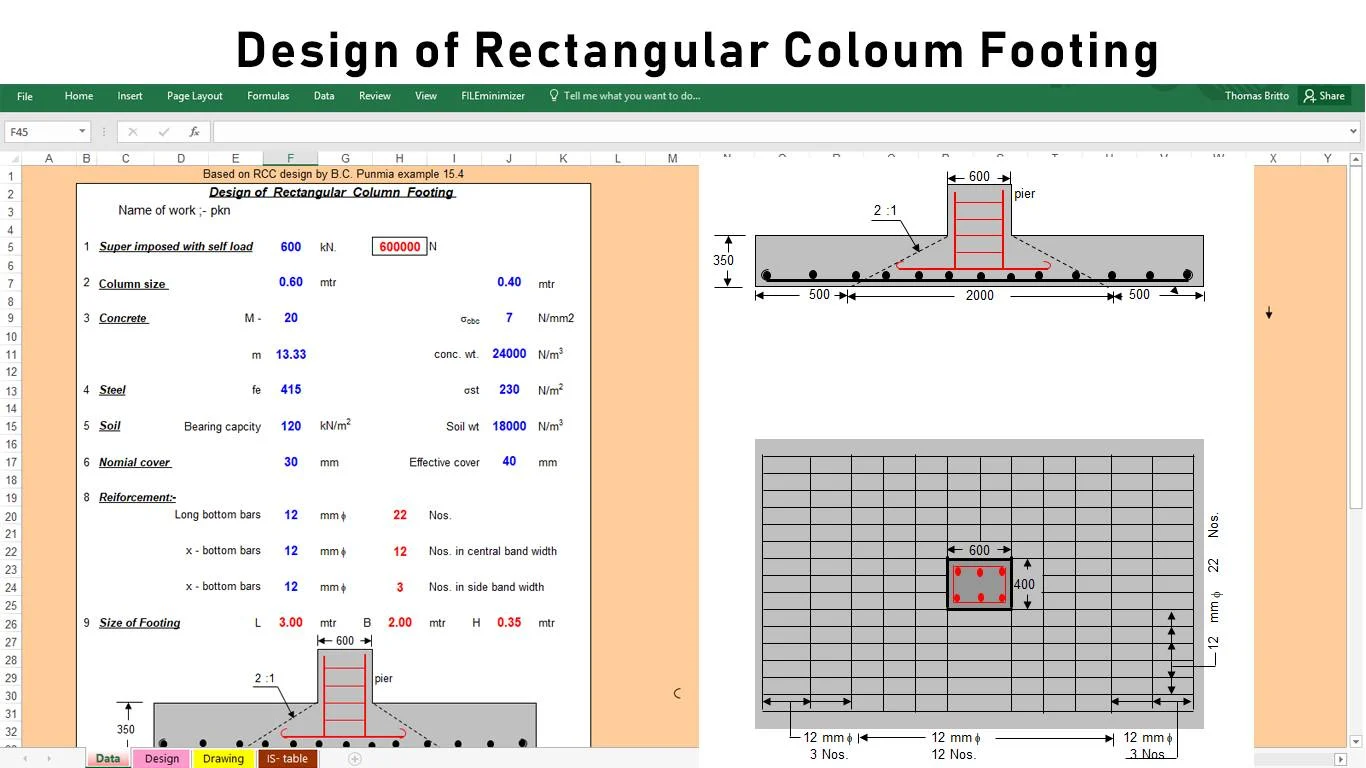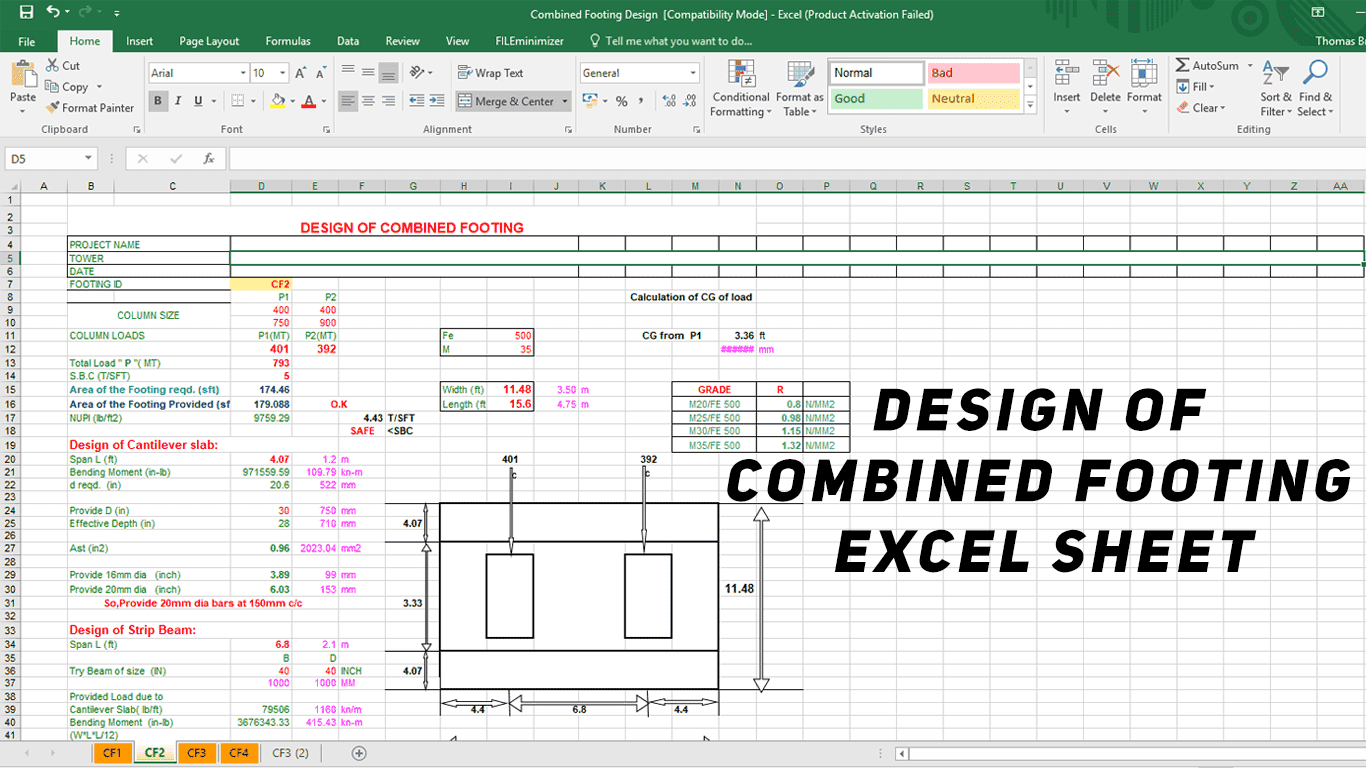Reinforced Concrete Design

Steel structures, in general, require only the detailed design of connections. For concrete structures, we must determine not only the area of longitudinal and lateral reinforcement required in each member, but also the way to best arrange and connect the reinforcement to insure acceptable structural performance.
A number of the column longitudinal reinforcement was based on the ACI minimum of 1% steel in the column. This indicates an efficient design. Ideally the percentage of steel in the column should be closer to 4%. Therefore, in future iterations of this design, a smaller columns size should be used.
Reinforcement detailing of a slab is done based on its support conditions. Slab may be supported on walls or beams or columns
Reinforced cement concrete:
Since concrete is a brittle material and is strong in compression. It is weak in tension, so steel is used inside concrete for strengthening and reinforcing the tensile strength of concrete. The steel must have appropriate deformations to provide strong bonds and interlocking of both materials. When completely surrounded by the hardened concrete mass it forms an integral part of the two materials, known as “Reinforced Concrete“.
Working stress design
This design concept is based on elastic theory, assuming a straight line stress distribution along the depth of the concrete. The actual loads or working loads acting on the structure are estimated and members are proportioned on the basis of certain allowable stresses in concrete and steel. The allowable stresses are fractions of the crushing strength of concrete (fc’) and the yield strength (fy). Because of the differences in realism and reliability over the past several decades, the strength design method has displaced the older stress design method.
Limit state design
It is a further step in the strength design method. It indicates the state of the member in which it ceases to meet the service requirements, such as, loosing its ability to withstand external loads or local damage. According to limit state design, reinforced concrete members have to be analyzed with regard to three limit states:
- Load carrying capacity (involves safety, stability and durability)
- Deformation (deflection, vibrations, and impact)
- The formation of cracks
The aim of this analysis is to ensure that no limiting sate will appear in the structural member during its service life.









